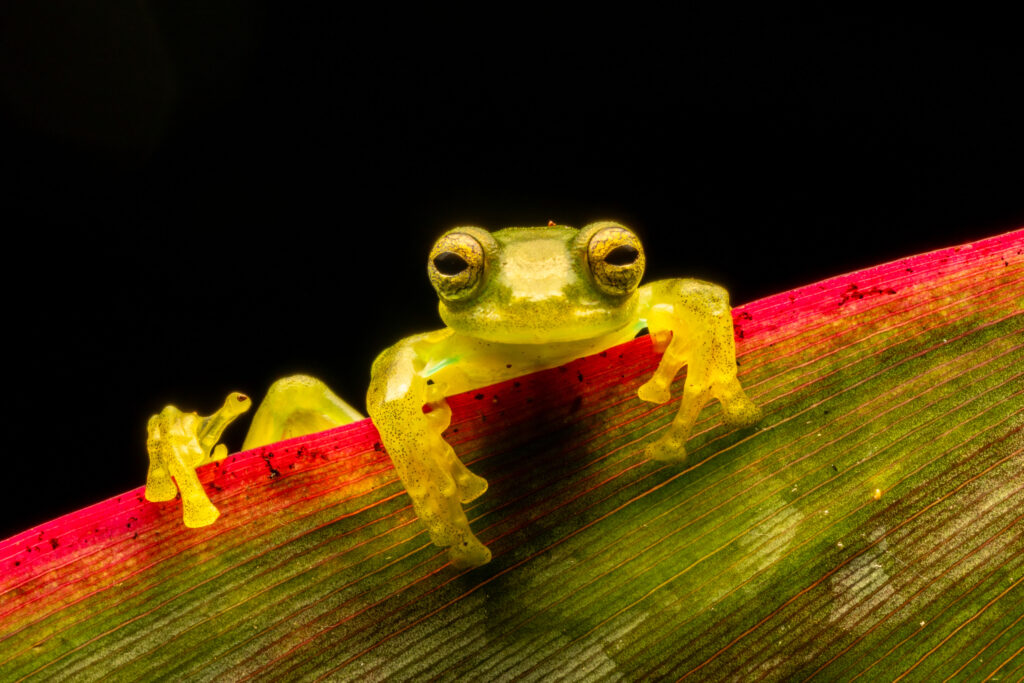Copyright Inside Climate News

In 2008, Ecuador made history by enshrining the rights of nature in its constitution, recognizing ecosystems as living entities with legal rights. For nearly two decades, Indigenous communities and environmentalists have defended these rights, setting a global example. Ecuadorian courts have ruled in favor of forests, coastal marine ecosystems, wild animals and rivers, the cutting edge of a new legal paradigm—one that treats ecosystems not as resources, but as living beings. Now, that is under threat. Ecuadorian President Daniel Noboa wants to rewrite the constitution, viewing the 2008 document as an obstacle to business development and his aggressive fight against transnational drug cartels. His critics, including environmentalists and Indigenous leaders, argue Noboa is using security concerns to dismantle hard-won rights and accelerate mining and oil extraction. Since taking office in 2023, Noboa has fast-tracked resource projects, weakened environmental protections, targeted Indigenous and environmental organizations and railed against the Constitutional Court, which has acted as the main institutional check on his power. All of this raises alarms about the future of Ecuador’s democracy, said César Rodríguez-Garavito, a law professor and the founding director of the More-Than-Human Life Program at New York University. And it has endangered legal protections for nature in what he has called “The Most Environmentally Imaginative Country on Earth.” The Ecuadorian Consulate in Washington, D.C., did not respond to requests for comment. Rodríguez-Garavito has worked with courts, scholars and advocates around the world on human rights and the environment. He’s also played a pivotal role in the global rights of nature movement, bringing together lawyers, Indigenous peoples, scientists, artists and others to fight for what he calls the “rights of the more-than-human world”—the interdependent web of life that includes humans and nonhumans. In Ecuador, Rodríguez-Garavito has worked with Indigenous communities to advance nature’s rights, studied the implementation of a groundbreaking rights of nature ruling and done pioneering legal work to have a cloud forest recognized as a co-creator of a song. As Ecuadorians prepare to go to the polls on Nov. 16 to decide whether to allow Noboa to rewrite the constitution, Inside Climate News talked with Rodríguez-Garavito about what’s at stake for the rights of nature. The interview has been lightly edited for length and clarity. KATIE SURMA: Legally, what has been the significance of Ecuador’s constitutional recognition of the rights of nature, both for Ecuador and globally? CÉSAR RODRÍGUEZ-GARAVITO: Let me start with the national. Thanks to the constitution—and to a number of court decisions, especially by Ecuador’s Constitutional Court—the country now has what, in my view, is the most sophisticated and innovative rights of nature framework anywhere in the world. Ecuador’s rights of nature law goes well beyond the general recognition of the importance of ecosystems or Indigenous worldviews that we see in other jurisdictions. Ecuador has moved from that high-level acknowledgment of the legal and moral worth of nonhumans—animals, forests, rivers and other species and ecosystems—to actually operationalizing those legal provisions to protect nature. To give a few examples: the combination of the constitution and the Constitutional Court’s jurisprudence has clarified what kinds of rights certain animal species have, and what it means in practice to grant rights to an ecosystem—such as in the Los Cedros forest case. The Court has also clarified the relationships among Indigenous rights law, human rights law and rights of nature law—their connections, differences and interactions. All of this has unfolded over nearly two decades at a level of detail and rigor unparalleled anywhere else in the world. “The benefits aren’t only for nature, they’re for people.” More importantly, the real test is not only whether the law has become more sophisticated or detailed, but whether ecosystems and communities—both human and nonhuman—are better protected as a result. That’s something we’ve studied in detail. In the case of Los Cedros, for example, we published a report documenting how the 2021 decision was implemented and what impact it had on the ground. We found that, thanks to the ruling, Los Cedros continues to be one of the most diverse places in the world. If one were to do a similar study of other ecosystems protected under Ecuador’s rights of nature framework, I suspect we’d see a consistent pattern—one where those protections have made a real difference. And the benefits aren’t only for nature, they’re for people. To stay with the Los Cedros example, the surrounding communities rely on the forest for clean water. Without the Constitutional Court’s ruling, those communities might no longer have access to affordable, reliable sources of clean water. Internationally, Ecuador occupies an iconic place in the global environmental imagination. Extensive research shows that after Ecuador adopted its 2008 constitution, it inspired enormous interest among environmental lawyers, advocates and other governments. While Ecuador’s constitution isn’t the only reason the rights of nature movement has flourished over the past two decades, it is certainly a major one. I would say that there’s hardly anyone studying developments in environmental law who doesn’t cite the 2008 constitution as a key reference point. Today, there are more than 500 initiatives around the world that draw on the idea of the rights of nature to advance environmental protection—and Ecuador has played a central, influential role in that global legal ecosystem. SURMA: There’s a cultural piece to the rights of nature, too. What has Ecuador’s legal recognition of nature’s rights done or meant culturally? RODRÍGUEZ-GARAVITO: That’s a very important question, because ultimately, legal change is not sustainable without cultural change. Constitutional innovations like Ecuador’s, or any major amendment that reshapes the basic pillars of governance and society, can achieve long-term transformation only if they are accompanied by shifts in culture and worldviews. The cultural significance of Ecuador’s rights of nature law has been enormous. It has inspired many collectives and Indigenous peoples, even beyond the Amazon region. I’ve been working with Indigenous leaders in New Zealand, for instance, who are very familiar with Ecuador’s advances in rights of nature and have drawn on them in their own work. That legal innovation has sparked new initiatives—some framed explicitly in terms of the rights of nature and others expressed through different frameworks, such as Indigenous rights law. The influence of Ecuador’s constitution and the legal developments that have followed from it have had deep cultural resonance across many fields. I’ve seen artists, designers, architects, journalists, writers and poets take inspiration from this notion. Robin Wall Kimmerer has this beautiful concept—what she calls a grammar of animacy. She writes that we need to recover the traditions and ways of speaking about nature that acknowledge the aliveness of nature—ways that recognize the more-than-human world through gratitude and reciprocity instead of domination. The rights of nature framework provides, to my mind, a legal grammar of animacy. They offer a language and a story that translates into legal terms the realization that we are not alone in the world as a species—that we are interconnected and entangled with the more-than-human world, and that this world is composed of subjects, not objects. What people around the world have understood the Ecuadorian constitution to express is that the law must find ways to acknowledge the animacy and the dignity of the more-than-human world. That idea is not bound to any one jurisdiction or discipline. It resonates across cultures, professions and ways of knowing. SURMA: Constitutions are documents that, among other things, restrict government power. Do you see Noboa’s plans as making Ecuador more free, or less? RODRÍGUEZ-GARAVITO: In some ways, what the Noboa government is doing is not new. It’s not new when viewed in a global context and it’s not new in Ecuador. In Ecuador, former [leftist] President Rafael Correa did something similar about 10 years ago. He forced the closure of a major environmental and human rights organization called Fundación Pachamama, whose bank accounts, ironically, were recently frozen again by the Noboa government, which purports to be on the opposite end of the political spectrum from Correa’s party. What is new, though, is that Noboa has decided to launch an all-out attack on environmental governance and organizations—an approach that is shocking both for Ecuadorians and for international observers. It’s particularly surprising because of the importance of the 2008 constitution, the strength of Ecuador’s Indigenous and environmental movements and the fact that until recently Noboa had mostly stayed within the boundaries of the rule of law, advancing his pro-business and anti-terrorism agenda largely within democratic boundaries. But over the last few months, that has changed dramatically. The tone and approach of his government have shifted in drastic ways. The passage of multiple emergency decrees, the targeting and criminalization of Indigenous and environmental defenders, the direct political pressure on Constitutional Court judges—even naming them publicly—all of that is deeply concerning. It has created a volatile political situation, one that threatens not only environmental protections but also the very foundations of the rule of law and democracy in Ecuador. SURMA: Some pro-business voices in Ecuador have said they would be for keeping the rights of nature in the constitution, but re-framing it as a human right to a clean environment. How do you see it? RODRÍGUEZ-GARAVITO: That argument is legally inaccurate and reflects a misunderstanding of what the rights of nature actually mean. Historically and conceptually, the right to a healthy environment has existed in many constitutions around the world for at least 30 years. It’s such a well-established concept that even the U.N. General Assembly adopted a resolution recognizing its international legal status. The idea that there is a right to a healthy environment has now moved decisively to the core of international human rights law. The rights of nature, however, are an addition to the legal toolkit for environmental protection—one that begins from a fundamentally different premise. The human right to a healthy environment recognizes only one type of rights-holder: human beings. That doesn’t make it deficient or ineffective—it remains a powerful and important legal tool. But it still operates within the anthropocentric framework of both international and domestic human rights law. What the rights of nature framework adds is an understanding that there are other subjects—other rights-holders—who also deserve legal and moral consideration, and whose protection is an end in itself, not merely a means to human ends. In this view, the interests of animals, forests, rivers and other nonhuman entities are not automatically subordinate to human interests, nor should they be pushed aside whenever they conflict with human interests like private property. The Inter-American Court of Human Rights, the highest tribunal of its kind in the region, recently elaborated on this difference. In a landmark decision on climate change, the Inter-American Court recognized “nature’s right to maintain its essential ecological processes” and distinguished it from the rights to a healthy environment, which it also protected. This difference is why the kinds of cases we’ve seen brought under the rights of nature framework would not have been possible under the traditional right to a healthy environment. SURMA: Ecuador’s 2008 constitution also has strong protections for citizen-led ballot initiatives. Two such initiatives have led to Ecuadorian voters choosing to end oil production in part of the Amazon rainforest and to end mining in a cloud forest—showing that protecting nature and human rights has wide public support. Do those outcomes say something about strong democratic institutions and processes and environmental protection? RODRÍGUEZ-GARAVITO: Yes, absolutely. There is a clear correlation between democratic governance and the protection of the environment. That connection is explicitly recognized in the Escazú Agreement, which is binding for Ecuador. The agreement emphasizes citizen participation and the central role of communities in environmental governance. The logic is straightforward: The destruction of ecosystems and other negative impacts on nature affect people—not only those alive today, but also future generations. And those impacts aren’t limited to the communities living near controversial projects, such as in Yasuní National Park. Cases like Yasuní are matters of national concern, which is precisely why democratic participation is crucial for robust environmental governance. Of course, citizens in a democracy may sometimes vote against protecting a particular ecosystem—but that’s part of democracy. It’s the least imperfect system we have for balancing competing interests. And that’s also why leaders with authoritarian tendencies so often restrict environmental protections and limit citizen participation in environmental decision-making. We’ve seen that pattern across the world—from India to Venezuela to Bolsonaro’s Brazil—on both the political right and the left. In Ecuador, one of the first warning signs under President Noboa came not from an action, but from an omission. He failed to comply with the popular mandate on Yasuní. The referendum required that all oil drilling there stop within one year of the vote. During his presidential campaign, Noboa had pledged to honor that timeline—but he later reneged on that promise. By refusing to enforce the decision, he has effectively chosen not to obey the law, delaying implementation with various excuses. “[Democracy] is the least imperfect system we have for balancing competing interests. And that’s also why leaders with authoritarian tendencies so often restrict environmental protections.” What has followed, unfortunately, has been a series of deliberate actions aimed at dismantling Ecuador’s environmental protections and institutions. His government dismantled the Ministry of Environment and fused it with the Ministry of Energy and Mining, reduced citizen and civil society participation in the management of protected areas and expanded state surveillance over NGOs, including environmental organizations—some of which have had their bank accounts frozen. SURMA: President Noboa and his supporters argue that the government has obligations to ensure a functioning economy and to fund security and public services. The surest way to fund the national budget, they say, is through extractive industries. What do you make of that argument? RODRÍGUEZ-GARAVITO: It’s a classic argument. It’s not the first time we’ve heard it. The same justification was used by Rafael Correa when he went after environmental organizations and Indigenous leaders. Correa even gave an infamous interview to the New Left Review, calling environmentalists and Indigenous leaders who criticized his mining and oil policies the “infantile left.” The argument was that resource extraction was necessary to fund infrastructure projects, such as building roads and expanding social services—which, in part, was true. Correa did improve infrastructure and social services, and for a while, that made him very popular in Ecuador. But 10 years have passed. We’re now deep into the climate crisis, and much action on biodiversity protection has been delayed. Meanwhile, other countries have shown that environmental protection can itself be a source of revenue. Costa Rica has done this for years, and Ecuador pioneered economic innovations that protect nature, including the debt-for-biodiversity swaps. Even if the original idea of protecting Yasuní in exchange for global compensation was poorly designed, the basic moral and legal instinct behind it was correct. There are many alternative ways to generate revenue. A perfect example is the Galápagos. How much international currency does it generate for the Ecuadorian government and its people? Ecuador already holds iconic status in global environmental conservation—the Amazon, the Andes and the Galápagos are central to the world’s environmental imagination. The country could double down on this advantage and pursue conservation as a source of truly sustainable development. Instead, governments that prioritize aggressive development of extractive industries are often seeking short-term fixes to cash-flow problems. That may work temporarily, but in the medium and long term, it is unsustainable. It risks moving Ecuador back to an economic model that cannot endure over time and misses the opportunity to leverage what is uniquely valuable about the country: its natural wealth. SURMA: The mining industry has cast itself as “pro-environment,” pointing out that metals and minerals are used in many renewable technologies. Some industry officials have argued that a new constitution ought to forgo rights or mechanisms that have been used to oppose mining, like the rights of nature and citizen initiatives. Do they have a point? RODRÍGUEZ-GARAVITO: The problem with the argument is that it is often framed in such general terms that it becomes difficult to engage with from a factual, empirically informed perspective. Based on the cases I know best in Ecuador, the minerals at stake have generally not been rare earth elements or lithium—they have mostly been gold and copper. Defending mining in general, especially if rights of nature are framed as an obstacle to mining in general, paints the situation with too broad a brush. Each project must be evaluated on its own merits, in its specific context and region, balancing the need for the mineral extraction against the potential harm to communities and ecosystems. That process relies on strong environmental governance: a Ministry of the Environment to oversee projects, citizen participation through consultation processes and judicial review. There is nothing inherently desirable about the unconditional promotion of mining or the absolute conservation of nature in every case. It is about finding a thoughtful balance among competing interests. This is why democratic governance is crucial—and why the current government is moving in exactly the opposite direction. When top-down processes bypass the Ministry of the Environment, let the Ministry of Mining decide on projects affecting ecosystems and silence critics, what you end up with is an unconditional, autocratic imposition of a single point of view—typically the interests of the extractive industries. That approach undermines the careful, case-by-case balancing that is necessary to manage these difficult decisions thoughtfully. SURMA: Judicial independence is a cornerstone of a functioning democracy. What is at stake if a new constitution erodes Ecuador’s Constitutional Court’s independence and authority? RODRÍGUEZ-GARAVITO: Ecuador—and Latin American constitutionalism more broadly—has learned from the experiences of authoritarian governments and dictatorships of the second half of the twentieth century. The Ecuadorian constitution was deliberately designed to prevent authoritarian takeovers. That’s why there is a carefully balanced separation of powers embedded in the text. My concern about a new constitution is that if it follows the government’s approach, it is likely to seek to reduce the power of judges and congress while increasing the power of the executive. History in Latin America shows us how that story ends: with autocracies. Even from a purely business perspective, this kind of concentration of power undermines good governance. Predictability, checks and balances and diverse points of view are essential for stable, functioning institutions. Democracy may frustrate everyone at times, but it does so in a way that preserves the ability of different factions, parties and institutions to negotiate, challenge and reach constructive agreement or disagreement. Another concern about a future constitution in Ecuador is that, if it is perceived—or framed by the government—as revenge against the Constitutional Court, it could severely curtail the very powers that enable checks and balances. These powers are embedded in the constitution itself, not granted by the court, but the court has implemented them faithfully. Undermining them would be a serious blow to the rule of law, human rights and the protection of nature and the environment in Ecuador. This story is funded by readers like you. Our nonprofit newsroom provides award-winning climate coverage free of charge and advertising. We rely on donations from readers like you to keep going. Please donate now to support our work. Donate Now SURMA: Where do Indigenous rights fit in all of this? What was their role in getting rights of nature into the constitution and what would taking that provision out mean for those groups? RODRÍGUEZ-GARAVITO: That is a key question, and it’s a crucial factor in the Ecuadorian context. The Indigenous movement was absolutely instrumental in securing Indigenous rights protections in the Ecuadorian constitution, as well as the incorporation of rights of nature. Since then, Indigenous organizations have led many of the marches, protests and direct actions that have pushed back against efforts to weaken those protections—efforts to bypass consultation and consent, undermine territorial protections or interfere with the granting of collective titles over their lands. These efforts are a major reason why Ecuador has maintained a relatively robust environmental governance framework—at least until recently. Looking ahead, the Indigenous movement remains one of the most hopeful forces in Ecuador. If it continues to protect its territories and assert its rights, it may also influence any future constitutional assembly. But it is still uncertain how that will unfold. What is particularly concerning is that the government is well aware of the pivotal role of the Indigenous movement in the creation and defense of the existing constitution. That awareness increases the risk that the government may intensify its repression of these movements. Many of the Indigenous organizations and individuals whose bank accounts have been frozen come from precisely these communities. SURMA: Any last thoughts about the Nov. 16 vote regarding the constitutional rewrite? RODRÍGUEZ-GARAVITO: The last thing I’ll say is that these are contentious issues everywhere. There is reasonable disagreement among different sectors of society about the appropriate balance between mining and environmental protection, and about the degree to which the economy or state agencies should be privatized. What is particularly worrying in Ecuador right now is that the government has chosen to weaken the very institutions through which these disagreements and debates could be processed peacefully. In an already volatile political context, it has undermined protections for human rights and rule-of-law institutions—from the Constitutional Court to the Ministry of the Environment. That shift transforms the situation from one of debate over how best to protect the environment and generate state revenue into a situation where democracy itself is at risk. And all of this has happened very rapidly, through highly autocratic means—which is deeply concerning. We are no longer dealing solely with challenges to environmental protection. We are now facing serious challenges to Ecuadorian democracy and the rule of law.



